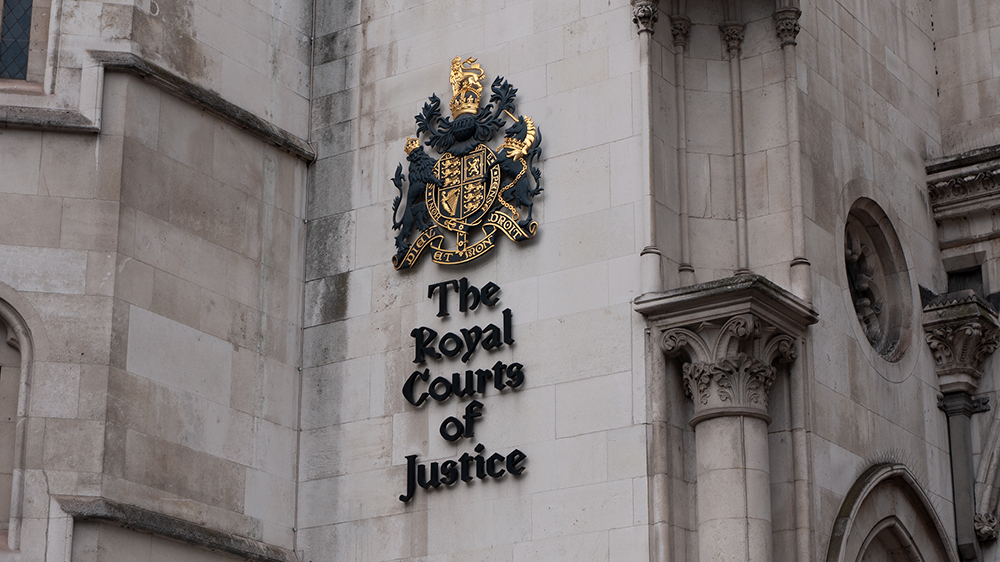Children’s book author unsuccessful in copyright claim against John Lewis dragon Christmas advert

An English copyright judge has ruled that the 2019 John Lewis Christmas advert featuring a dragon unable to control its fire did not infringe the copyright of a children’s book author who had self-published a book with a similar premise.

About this case:
- Citation:[2023] EWHC 766
- Judgment:
- Court:England and Wales High Court
- Judge:Her Honour Judge Melissa Clarke
Fay Evans, who authored a work titled Fred the Fire-Sneezing Dragon (FFD) in 2017, claimed that John Lewis plc and DBB UK Ltd, the advertising firm that created the advert, had copied from her work. The defendants denied infringement and, in a counterclaim, sought a declaration of non-infringement and for the claimant to publicise this on her website and social media.
The case was heard by Judge Melissa Clarke of the High Court of Justice. Ms Kendal Watkinson appeared for the claimant and Mr Michael Hicks for the defendants.
No basis for knowledge
In September 2017, the claimant self-published her book, which told the story of a young dragon in a school populated by human characters who was teased for his fire-breathing sneezes until he is able to gain the approval of his peers by cooking a lunch. Between the launch of the book and October 2019 she sold 914 copies, mostly via schools in the northwest of England.
It was alleged by the claimant that the 2019 John Lewis advert, featuring a dragon that has trouble controlling his fire that later brings a Christmas pudding to a village banquet, together with an accompanying children’s book titled Excitable Edgar, infringed her copyright in FFD. She first alleged this in November 2019 shortly after seeing the advert for the first time and later issued the copyright claim following the making of a legal complaint.
For the claimant it was submitted that the similarities between the TV dragon and Fred, as well as the book version of the TV dragon, infringed elements of Fred’s character protectable by copyright. These included the dragon’s youth, accidental breathing of fire, cute appearance, and small size. The defendants’ case was that the 2019 advert was based on a concept originally outlined by a leading creative at the second defendant in 2016, and any resemblance was coincidental.
Evidence was led of details of other children’s books with similar concepts of dragons unable to control their fire until later putting it to good use which the creative team discovered during a search for material similar to the advert. It was further argued that there was no basis for them to have any prior knowledge of FFD given the limited number of sales that it had achieved.
Creative integrity
In her decision, Judge Clarke began by saying of the defendants’ witnesses: “I have been extremely impressed by the professionalism, thoroughness, care and creativity disclosed in the evidence of all those involved in the creation of the 2019 Advert and Excitable Edgar. They each appear to be at the very top of their game in their respective industries, and I consider they exit this litigation without the slightest hint or shadow of a stain on their creative integrity.”
On any access the defendants had to the work, she said: “The Claimant’s case on access by the Defendants is so weak that that it seems to me to be extremely unlikely that anyone involved in the 2019 Advert or Excitable Edgar had access to FFD before launch at all. There is no direct evidence that they have, so the question is whether I can properly draw an inference that it was both seen and copied, as the Claimant asks me to do.”
She continued: “This is not a case where the work said to be copied is so ubiquitous or well-known that it is more likely than not that it has been accessed, or the similarities are so numerous and such a large part has been taken, that coincidence is a less likely explanation than copying, or that there is something common to the allegedly infringing work and the work said to be copied which can only be explained by copying.”
Turning to the defendants’ counterclaim, Judge Clarke said: “The Claimant has not suggested any special reasons why it should not be granted, and I consider that it would suit the useful purpose of making clear to the public and the industries in which the Defendants and their creative partners work that the allegations of copyright infringement impugning the integrity of their creativity have been rejected by this Court, providing some justice to the Defendants without any appreciable prejudice to the Claimant.”
She concluded: “I accept the Defendants’ submission that any commercial uncertainty caused by the bringing of this claim for copyright infringement against them has been magnified by the publicity campaign carried out by the Claimant over the past 3.5 years, including around the trial itself. Ms Watkinson submits that she was entitled to publicise her claim and I do not disagree with that. The quid pro quo is that, her claims having been rejected by the Court, the Court will require her to publicise the judgment and order made against her in order to endeavour to redress the balance.”
The copyright claim was therefore rejected. Following circulation of the draft judgment the parties agreed the terms of a publicity order agreeing a notice to be published on the claimant’s website and Facebook and Twitter accounts.






